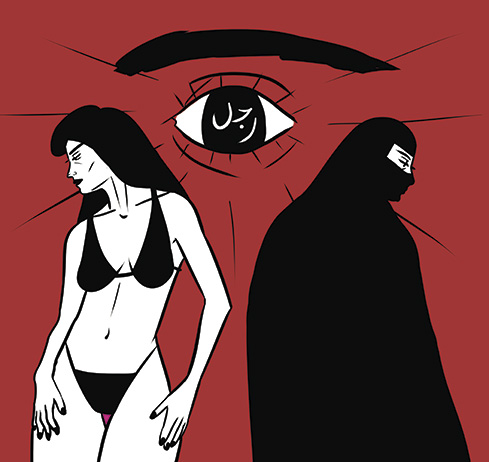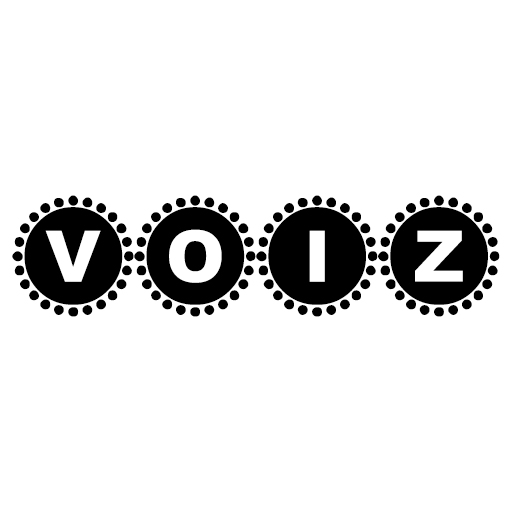Here drawing is revolution
Zainab Fasiki illustration
Text by Valerio Bindi
From Lebanon to Morocco, from Tunisia to Egypt, the comic strip, rigorously self-produced, is a way of expressing opinions. And women are in the foreground

There are territories of comics where autonomous production is fundamental because, in fact, it is the only other language engine than the institutional one. An example is the Arab world (or rather in the worlds). Autonomous production has suffered a lot from the lockdown because it is the enemy of social distancing since it needs constant confrontations, meetings and dialogues. The virus came just as autonomous production was managing to interact with the classic publishing market and even modifying it. Those who work in autonomous produced comics, in fact, base everything on a trust agreement made with the public that takes the form of the meeting: festivals, workshops and a network of independent bookstores are the fundamental elements for keeping faith with this unwritten agreement. Shortly before the pandemic broke out, in Beirut the fifth Mahmoud Kahil Award ceremony was to be held, named after one of the most famous designers and caricaturists in the Arab world. Organized by the Sawwaf Arabic Comics Initiative at the American University in Beirut with the supervision of Lina Ghaibeh, it promotes and encourages artists from the Arab world: authors of editorial cartoons, comics and graphic illustrations. Participation is open and the works come from Algeria, Saudi Arabia, Bahrain, Egypt, Libya, Iraq, Jordan, Kuwait, Lebanon, Morocco, Palestine, Syria, Tunisia and Yemen to win a fairly substantial scholarship in the various categories (from 5 to 10 thousand dollars). A third of the participants are women. The ceremony, the meetings, the related exhibitions, are all quarantined events this year but the winners have been announced online anyway and all the categories related to the comics have been won by authors and authors of the autonomous production landscape: Lena Merhej (Lebanon , best graphic novel with the splendid graphic poem Salam a Marseille), Hussein Adil (Iraq, best short story, recently published in Italy on Linus) and among the mentioned Barrak Rima (Lebanon, Beirut Trilogy, Mesogea), Zainab Fasiki (Morocco, with Hshouma, a book currently being published for 001 Edizioni), Kamal Zakkour (Algeria, one of the authors of the Lab619 magazine), Tracy Chahwan (Lebanon, one of the founders of zine Zeez, a story of her with Yazan Al Saadi was on march issue of Linus), and an important award to the Lab 619 magazine (Tunisia, active since 2013, some contributions are in Italian on Migrazioni, Fortepressa), as well as a recognition of the passionate work of Jad (Lebanon, author of the first graphic novel in Arabic language in 1980), an artist who has been one of the main architects of the transformation of comics in this world. How do these independent magazines work, what everyone now calls “zine” (short for “comic-magazine”), which actually invented the comics in the Arab world? Abir Gasmi, Lab619 coordinator, says: “There is no hierarchy in our collective, whether or not to participate in an activity is a decision that is taken together, and if someone if some persons disagree, we wouldn’t participate in the activity as a collective. We discuss all aspects of the process. We are self-financing and a couple of numbers have had the support of external partners, cultural institutes, associations or NGOs. So far we didn’t have to deal with any kind of censorship, indeed we invite artists to push their boundaries as far as they want ». Lab619 (the number is the prefix of Tunisia in bar codes) is also a real engine of exchanges and solidarity throughout the planet of the Arab comic, creating opportunities for artists that it involves in seminars, workshops or commissioned works for international organizations. In Egypt, however, there are TokTok (it exists since January 2011, two weeks before the riots in Tahrir square) and Garage (since 2014). Speaking of TokTok, explains the founder Shennawy, that the name alludes to the unofficial, strangeness and dangerousness of the microtaxis that circulate for Cairo and which are so called. “This year there is support from a funding from a European commission,” he explains, “but to continue printing we need to look for more.” These are magazines aimed at a rather restricted community of readers, where it is possible to speak openly because the screens of the censorship are not yet active, but the survival of the projects is always at risk. TokTok is now able to give a reimbursement of expenses to its artists, says Migo, an author of this magazine and animator, that he approaches as well graphic and directing works. Other important collectives are those around Skefkef (Morocco), Habka (Libya), Mesaha (Iraq), Fanzeen (Jordan). With the censorship and brutality at the beginning of the war in Syria in 2012 the anonymous collective Comic4Syria and the seminal Samandal (in circulation since 2007) were compared. The Lebanese magazine faced moments of persecution due to criticism for a comic that denounced the violent idioms of common language. In Lebanon, the community of authors is very large and connected, and there is not only Samandal. A very interesting project is Zeez (from 2017), which in Arabic means cicadas “Because they are small but make a lot of noise“, explains the collective. It is a very close-knit predominantly female group that uses a tabloid format. Five hundred numbered copies printed in a press: there is no longer a market for newspapers in Lebanon and printers also accept small print runs. Presentations in cafes and pubs or during concerts, the magazine remains available in some cafes and in a couple of bookstores in Beirut. Speak Karen Keyrouz (Lebanese, among the latest purchases of the editorial staff of Samandal and founder of Zeez): «Zeez has no legal registration, we have maximum freedom of expression. We wanted it to have no rules, that would allow personal experimentation. A “zine” must be a comfortable space for artists, a place where they feel free, something very fast, rough and organic». The absolute protagonists of this scene are the women: Zainab Fasiki, Moroccan, mechanical engineer, is the founder of the collective / Women Power / which invites twenty women every month to participate in workshops to provide awareness and tools to those who want to work in the field of art: “I live in a society obsessed with only women’s behavior, and doesn’t use all this obsession and energy to punish real criminals. A society that always connects sex to our bodies, even when it’s just drawn.” explains Zainab. Tracy Chahwan, Lebanese of the Zeez collective, instead puts women at the center of a Tarantine narrative in works such as Beirut Bloody Beirut. Written in a mélange of French, English and Arabic, it tells the story of two women who know each other by sharing a taxi and crossing the city from south to east, between the divisions of a society that cannot give space to the wishes of the youngest. In short, a small, great revolution. And this is only the beginning. © 2023 Valerio Bindi Tema di Anders Norén La repubblica / Robinson – July 03 2020
